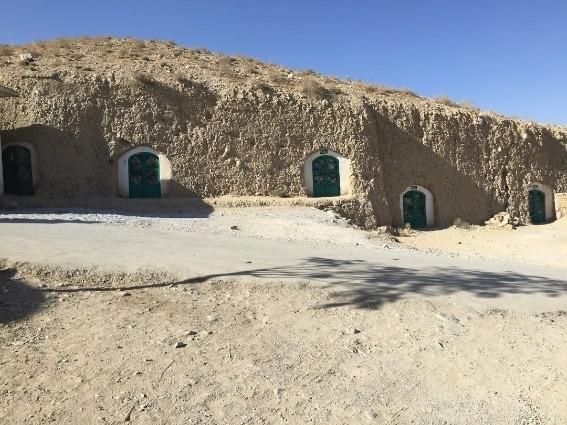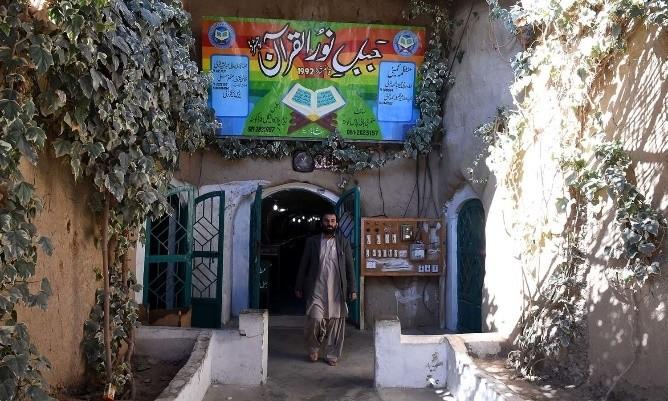
3 minute read
LOCAL CASE STUDY# 02
4.7. Jabal-e-Noor Ul Quran, Quetta:
Deep inside the dry, biscuit-colored mountains surrounding Pakistan’s south-western city of Quetta, lays an unexpected treasure: a honeycomb of tunnels bursting with cases of Holy Qurans, hidden safely from desecration. The hill is known as Jabal-e-Noor-ulQuran, or “Mountain of Light of Quran”, and has been visited by hundreds of thousands of people since, two brothers turned it into a shrine for Islam’s holy book, some copies of which are up to 600 years old, officials who run it say. Inside it, is Jabal-eNoor-ul-Quran which is a hill encompassing a network of tunnels that are a mile long.
Advertisement

However, it is no ordinary hill, for it contains thousands and thousands of old and damaged copies of the Holy Quran from all over Pakistan. They are stored here so that they are protected from further desecration. It has been named after the mountain Jabal al Nour in Saudi Arabia, which holds Ghaar e Hira, where Hazrat Muhammad (SAW) received the first revelation and would often meditate there as well. There are 5 blocks; each block contains 10 to 15 main caves and many sub-caves. Each cave is 7 feet high and 8 feet wide. Blocks B to E are now sealed because they have been filled to their full capacity. Block A is open for visitors. There is a library and separate prayer rooms for men and women. The passageway is carpeted, and on both sides, one will find the colorful sacks filled with the Holy Quran. Hundreds and thousands of visitors come to see this unique and sacred place, for it is indeed awe inspiring. The highest number on a given day specifically Friday can be up to 200. In these caves which stretch up to 3.5 meters long, not only are worn out and damaged copies of the
Holy Quran stored but are also preserved. These over 100 caves, which have been carved without any machinery, are home to copies of Quran dating back to the 11th and 12th century. The problem is especially thorny in Pakistan, where any disrespect to the Holy Quran can inflame accusations of blasphemy, punishable by death — whether by the state or at the hands of a vigilante mob. Religious scholars approve of two ways: by wrapping the book carefully in a cloth and burying it in the ground, as at Jabal-e-Noor, or placing it in flowing water, so, the ink is washed away from the pages. But the man behind the mountain, affluent 77-year-old businessman, Abdul Sammad Lehri, has an idea that, if realized, would prove both risky and revolutionary: building one of Pakistan’s first-ever Holy Quran-recycling plants. The move could turn Lehri’s shrine into a target. In neighboring Afghanistan in 2011, around 1,000 angry demonstrators partially destroyed a paper mill that had been accused of recycling the Holy Quran into toilet paper. While in Pakistan, an angry mob torched a factory in Punjab province in November 2015, after one of its employees was accused of burning pages of the Holy Quran in the boiler.

4.7.1. How it Came into Being:
In Pakistan the two ways of dealing with Holy Quran’s that can no longer be used is either to bury them or release them into a river or sea, as flowing water will wash away the ink. Haji Mir Abdul Samad Lehri participated in the first method, supported by his brother Haji Abdul Rasheed Lehri. Later on, two other people joined them i.e., Allah Noor Davi and Haji Muzaffar Ali, and consequently it was Allah Noor Davi’s idea that it would be much better to store them. And so, in March 1992, the process of digging the tunnels began. This has been entirely done by hand. Since the earth inside is very dry and stony, it takes 4 to 5 months to dig a 200 feet tunnel. Within Quetta two vans are used to collect the manuscripts. Also, tin boxes have been placed all over the city, where people can deposit them as well.

4.7.2. How the Holy Qurans are Classified

At first every single copy was being stored, but soon it was clear that it would not be possible to do that, now all the manuscripts are brought to the sorting section and then they are classified into the following categories a) Usable: The usable ones are kept in the library, while those which are rare and valuable are kept on display in glass cases. Some of these can be dated back to 300 to 500 years, many of which are handwritten. b) Usable after Restoration: The copies that are restored are distributed FE-SABEELLILAH (free of charge for the sake of Allah) to the poor or in mosques and educational institutes. Until now 300,000 such Holy Quran’s have been given away. Furthermore 100,000 extracts such as different surahs, single saparahs etc have also been distributed. c) Cannot be used: These of course are those that are stored in the sacks.(Jabal-eNoor-Ul-Quran, 2018)








